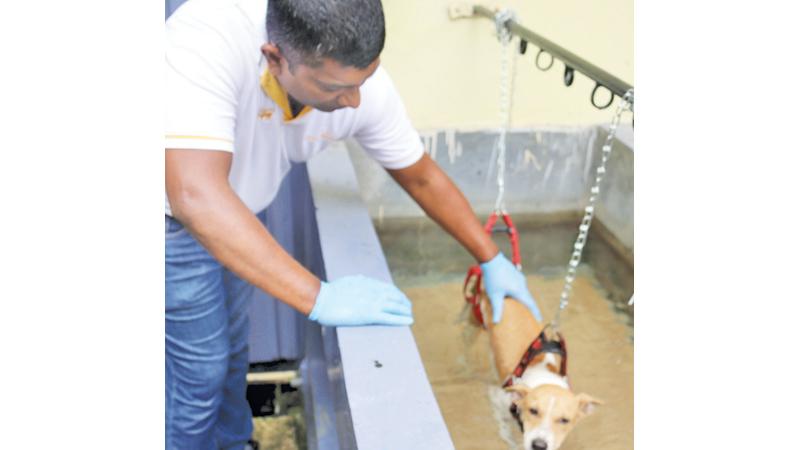
‘Aura’, a mongrel around three years old was found by the side of a street by an animal lover three months ago. All it could do was to raise its head and look painfully at the person who had come to her assistance as she was the victim of an accident or an attack.
The Good Samaritan handed the animal to an organisation campaigning for the wellbeing of homeless dogs. The organisation treated it and sent the animal to a veterinary hospital where it was examined and X-rayed. The X-ray showed that the animal’s spine was fractured.
It was at this time that the animal was christened Aura and transferred to the hospital’s treatment centre in the suburbs of Colombo. As Aura was unable to sit by herself, hospital authorities referred the animal to physiotherapist Janaka Edirisinghe who was researching on the effectiveness of hydrotherapy for spinal cord injuries in canine rehabilitation.
Janaka, an alumni of the School of Physiotherapy and Occupational Therapy of the National hospital, Colombo and a former physiotherapist at Sri Lanka Cricket, is studying veterinary physiotherapy and has a special interest in ‘canine physiotherapy’
He said that Veterinary Physiotherapy aims to restore movement and function of animals following injury, illness or developmental problems.
Janaka, who treats animals in distress whenever possible, said that after he examined Aura, he carried out mobilisation exercises, manipulation exercises and hydrotherapy on Aura who responded to the treatment remarkably. “She can stand on her four feet now,” Janaka said.
When I visited Janaka at his treatment centre, he was examining another casualty referred to him. The X-ray revealed the animal named Mary had a dislocated hip.
He recalled that he could save three of the first six animals referred to him by the hospital, that were to be euthanised and added that the rate of success was improving.
He said that in addition to road accidents and inhuman treatment, the most common causes of injury of animals are arthritis and hip displacement. “If detected at the onset, the latter can be treated successfully,” Janaka said.
